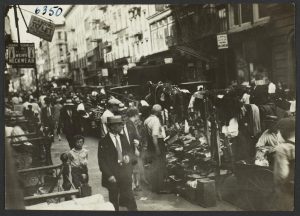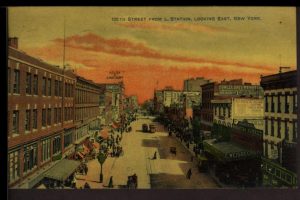Over the past several decades libraries around the world have spent enormous amounts of resources digitizing unique special collections. At latest count, the Digital Public Library of America contains more than 40 million documents. As instructors plan for remote learning, this wealth of digitized archival material presents an opportunity to teach students about archival research without having to access reading rooms, which remain closed or limited by the pandemic. But this wealth of material can also lead to misunderstandings of the nature of the historical record. This blog post discusses some of the challenges and opportunities of teaching with digitized archival collections.
Key Concepts to Consider
Lost in Digitization.
Important features of traditional archival research done in a reading room can be lost or rendered invisible to students when using digitized sources.
- A sense of the bias, messiness, incompleteness, and contingent nature of the historical record.
- The idea of the archives as a site of power.
- Serendipity in browsing, the realization that research questions are shaped by the research process.
Context Collapse.
Digitized archives can mask the radical imbalance of much of the historical record. The silences, erasures, and neglect of documents created by people of color, women, immigrants, and workers are hidden by the curated collation of archives into online datasets.
Discovery.
The opportunities for students and researchers in using digitized archives center around discovery. No longer limited to examining a single primary source, or a curated set of documents, students can use digitized archives to discover their own research projects. For the purposes of instruction, digitized collections used should be more or less complete. Students should be able to discern absence, as well as presence, of subject matter and materials.
Resources for Archival Analysis.
These documents provide further information about constructing classroom assignments for analyzing archives and archival sources:
Columbia Libraries Collections for Instruction
These digitized history archives, accessible via the Columbia University Libraries, provide the type of completeness as a data set that will allow students to pursue a range of research learning tasks.
Correspondence and Diaries from the Hubert H. Harrison Papers
Hundreds of letters, photos, and documents created by one of Harlem’s most important early political activists.
Community Service Society Photographs
Almost 1400 photographs depicting urban poverty, tenement housing, and other pressing social issue

s in late-19th- and early-20th-century New York.
Herbert H. Lehman Special Correspondence
Correspondence with nearly 1,000 individuals from 1864 through 1982, including letters from every President of the U. S. from Franklin Roosevelt to Lyndon Johnson, as well as from notables such as Robert F. Kennedy, Fiorello LaGuardia, and Alfred E. Smith.
Carnegie Corporation of New York Digital Archive
A portal into the Corporation’s philanthropy from the 1870s to the 21st century, from early twentieth century gifts in support of library construction to more recent interviews relating to the Corporation’s Russia Initiative.
New York Real Estate Brochure Collection [Avery]
Over 9,200 advertising brochures, floor plans, price lists, and related materials that document residential and commercial real estate development in the five boroughs of New York and outlying areas from the 1920s to the 1970s.

Photographs from the Frederick Fried Coney Island Collection
Photographs depicting the rich public life and popular culture of Coney Island from the late nineteenth to the mid-twentieth century, illustrating amusement rides; buildings and structures; parades, contests, and performances; the boardwalk; transportation; and people, both visitors to and employees of Coney Island’s various attractions, amusements, and spectacles.
Seymour B. Durst Old York Library [Avery]
More than 40,000 objects including historic photographs, maps, pamphlets, postcards, books, and New York City memorabilia from the 18th century to the 1980s.
Other Collections for Instruction
These digitized history archives, accessible through other library websites, are also exemplary for student research learning.
The George Grantham Bain Collection, Library of Congress
Has about 50,000 images, mostly depicting Progressive Era New York City.
W.E.B. Du Bois papers, UMass
Contains nearly 100,000 original documents.
Independent Voices
An open-access database, mostly featuring alternative newspapers from the 1960s and 1970s.